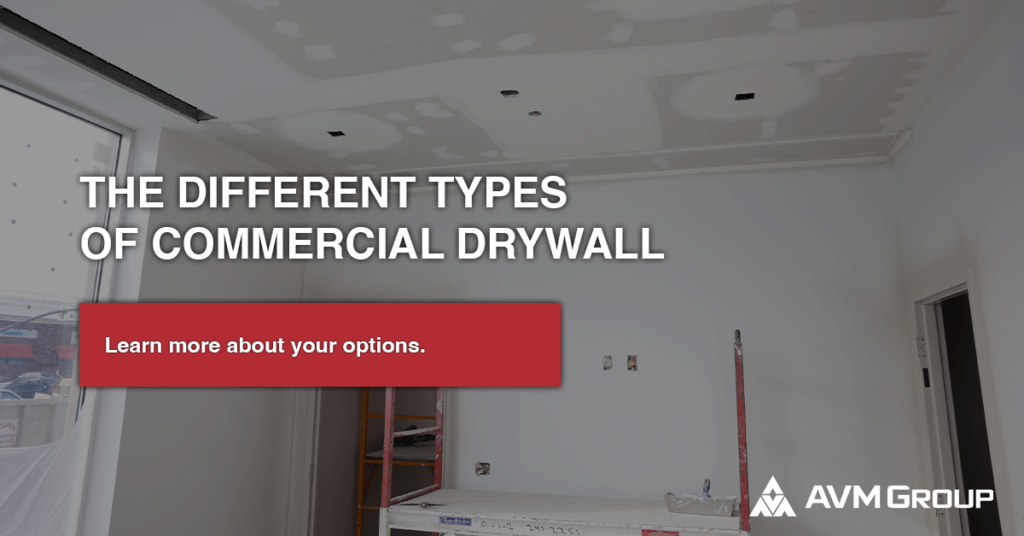*This post is part of a much larger pillar blog: The Complete Commercial Drywall Guide
Table of Contents
ToggleIntroduction
There are various types of commercial drywall that can be used during construction.
Each one offers different benefits, so depending on the needs of your business, you can customize each room.
Continue reading to learn more about each type of drywall from the team at AVM Group.
Regular or White Board
The most prevalent type of commercial drywall used, regular drywall, also known as white board, is suited for most rooms.
It is typically brown on one side and white on the other. It is made of gypsum, but unlike other varieties that hold up well in damp environments, it lacks a specific mold and mildew resistance.
Moisture Resistant or Green Board
Commercial drywall with a green covering, commonly referred to as moisture-resistant drywall, is more water-resistant than conventional drywall.
Green board is constructed from the same elements as standard drywall, except it has wax-coated paper coating.
In small wet spaces like bathrooms, kitchens, laundry rooms, basements, and utility rooms, it is frequently utilized as a tile backer.
Plaster Baseboard or Blue Board
Plaster baseboard, another name for blue board commercial drywall, is used as a foundation for veneer plastering, which must be laid on top.
When finished, the surface paper of blue board’s gypsum interior has unique absorption properties that make it appear to be real plaster.
Blue board commercial drywall isn’t designed to be painted, taped, or mudded, and veneer plastering involves fewer steps than mudding and taping.

Paperless
Fiberglass is used to cover paperless commercial drywall, which offers even better resistance to mold and mildew and protects the gypsum board from decomposition.
It’s gaining popularity as a substitute for standard drywall.
GET THE LATEST INDUSTRY NEWS DELIVERED TO YOUR INBOX
Stay on the forefront of the construction industry with our weekly e-newsletter.
Purple Board
The benefits of purple commercial drywall are similar to those of green drywall, except it is more resistant to mold and mildew.
Compared to green drywall, this type of drywall features a gypsum inside that is completely covered with recycled paper for water resistance.
Type X
A fire-resistant option for commercial drywall is Type X, which has fiberglass in the gypsum core.
To further inhibit the spread of a fire, multiple layers of this type of drywall can be installed. Its increased thickness may also enhance its soundproofing abilities.
Soundproof Commercial Drywall
Gypsum, wood fibers, and polymers are combined to create laminated drywall, which increases the STC (sound transmission class). It could be a little more difficult to cut this drywall than other common options because it is denser than conventional commercial drywall.
It is installed in locations where noise is an issue or when silence is required in a room because of its soundproofing properties.
Conclusion
In conclusion, there are numerous options business owners have when selecting commercial drywall for their buildings. We hope this guide helped you learn more about these options, and empowered you to make the best decision possible.
If you need help installing commercial drywall, contact our team of experts.



